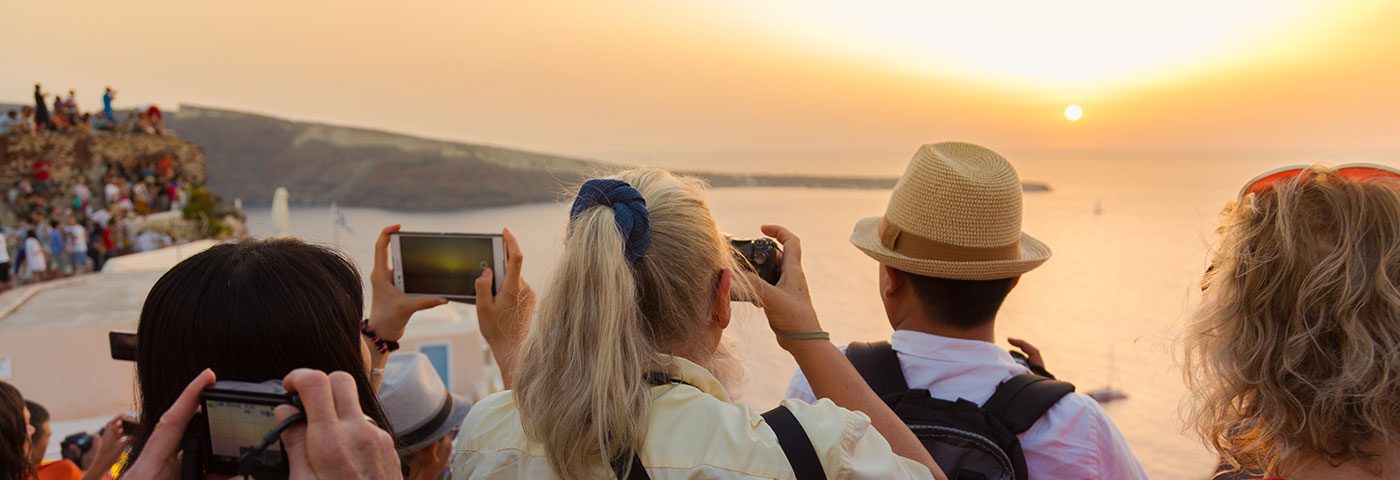Among this summer’s slew of stories about overtourism, one took a slightly different angle. In an article titled 10 tourist destinations ruined by Instagram, the Independent reported how “the rise of social media means that even the most hidden of hidden gems doesn’t remain so for long,” followed by a standard catalogue of images of overcrowded (and not very hidden) destinations – Machu Picchu, Leaning Tower of Pisa, Great Wall of China etc. A more in depth article on The Ringer, Loved to Death: How Instagram Is Destroying Our Natural Wonders, looked at how social media doesn’t only impact upon the world’s best loved sites, but also draws crowds to supposedly secret, off the beaten track places too.
According to Tnooz, the images we take on our holidays represent the most shared form of content on social networking sites. And not just the photos, (of which 350 million or so are added to Facebook each day), but the stories too. Facebook research in 2012 (admittedly basically a generation ago in social media, but these are most up to date I can find) claimed that travel experiences were the topic of 42% of stories shared by users of the site.
Along with the Tripadvisor reviews, snarkey tweets, instagram poses and more, this mass of user generated content represents the largest – and ever-growing – database of tourist opinion assembled. According to a recent article on Entrepreneur, “97% of millennials share photos and videos of their travels online, building an influential web of peer-to-peer content that serves to inspire potential guests”, with “89% of millennials plan travel activities based on content posted by their peers online”.
Around the world, various researchers have been trying to work out how to put all this content to good use. For example, the Nature Conservancy is creating the online Atlas of Ocean Wealth by combining more traditional academic research with social media posts in order to work out how much the presence of healthy coral reefs countries to the countries and regions where they are found around the world. Hotel locations are mapped alongside photos shared from a location, and photos of dive-sites and underwater photographs are measured and compared alongside tourism activities that indirectly benefit from the presence of coral reefs.
In Australia, Griffith University is analysing Twitter to measure the health of the Great Barrier Reef. Having downloaded almost a year’s worth of tweets sent from the area along the Great Barrier Reef, they selected potentially useful tweets that contained keywords such as “fish”, “coral”, “turtle” or “bleach”, 61% of which were geotagged, meaning researchers could match opinions with locations – and because tweeting is generally an instant response, the researchers could be fairly sure the vast majority of tweets referred to the location from where they were sent. It’s still early days, but the type of trends researchers were able to pick out included several tweets expressing concern over the welfare of dugongs.
Similar initiatives are being trialled in urban destinations, using GPS and geotagging to track tourist flows and movement through city hotspots, so as to work out how better manage them. An article this April from The Local reported that Venice is planning to install people-counters to monitor the number of visitors to its most popular sites, such as Ponte degli Scalzi and Ponte di Calatrava, with the figures shared live on social media in a bid to avoid overcrowding.
Projects such as these are in their infancy, and there will be a lot of false starts, and research that merely confirms what everyone already new (such as one study that revealed Lions and Elephants were the most popular animals to take photos of in African parks). There will also be the uncomfortable paradox that the more data we get, the more useful it becomes, yet the getting of this data requires more tourists taking and sharing more photos – and potentially doing more damage along the way.
However, if we don’t look for ways to reuse this vast wealth of content to redesign our industry, then we are treating it as disposable waste rather than seeing how we can factor the information back in. In essence, every photo, every comment, every decision registered and shared, is a form of review. Why would we ignore what they say?




